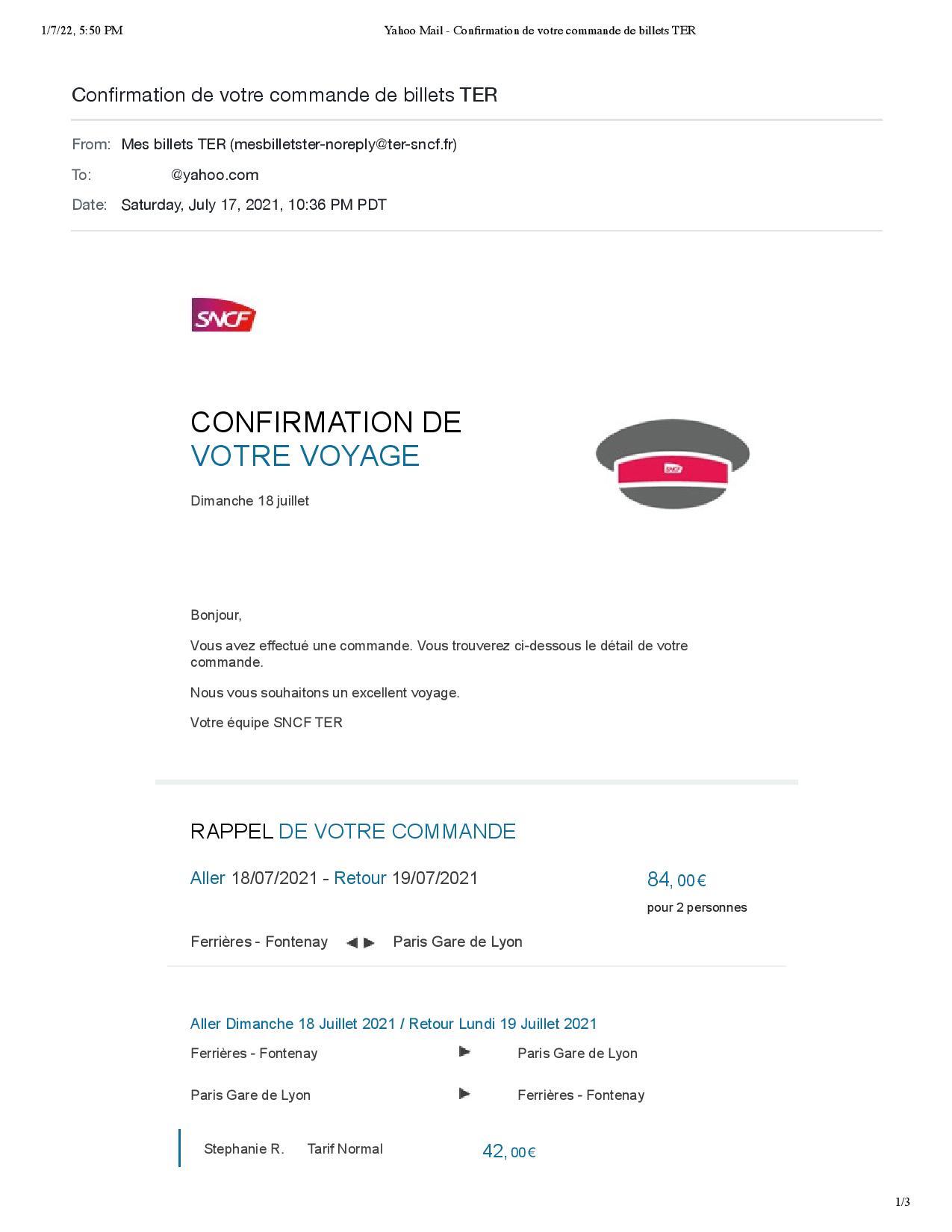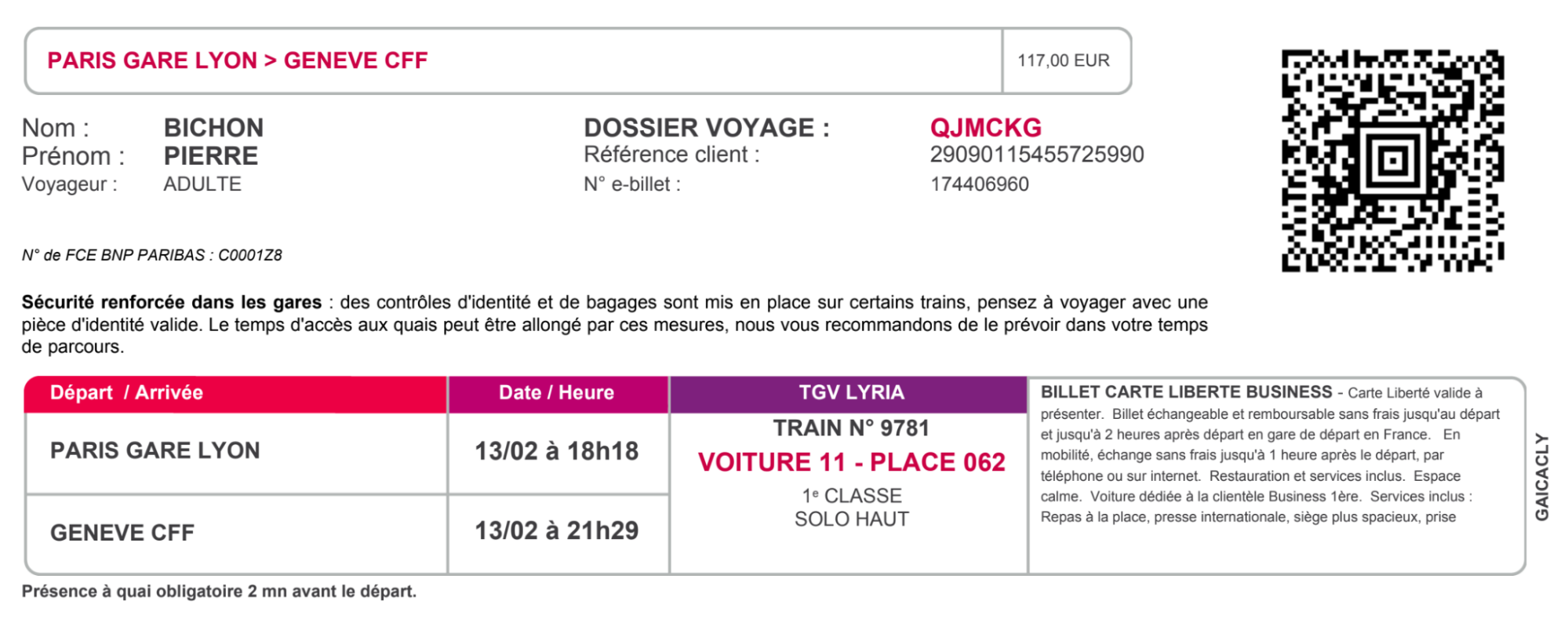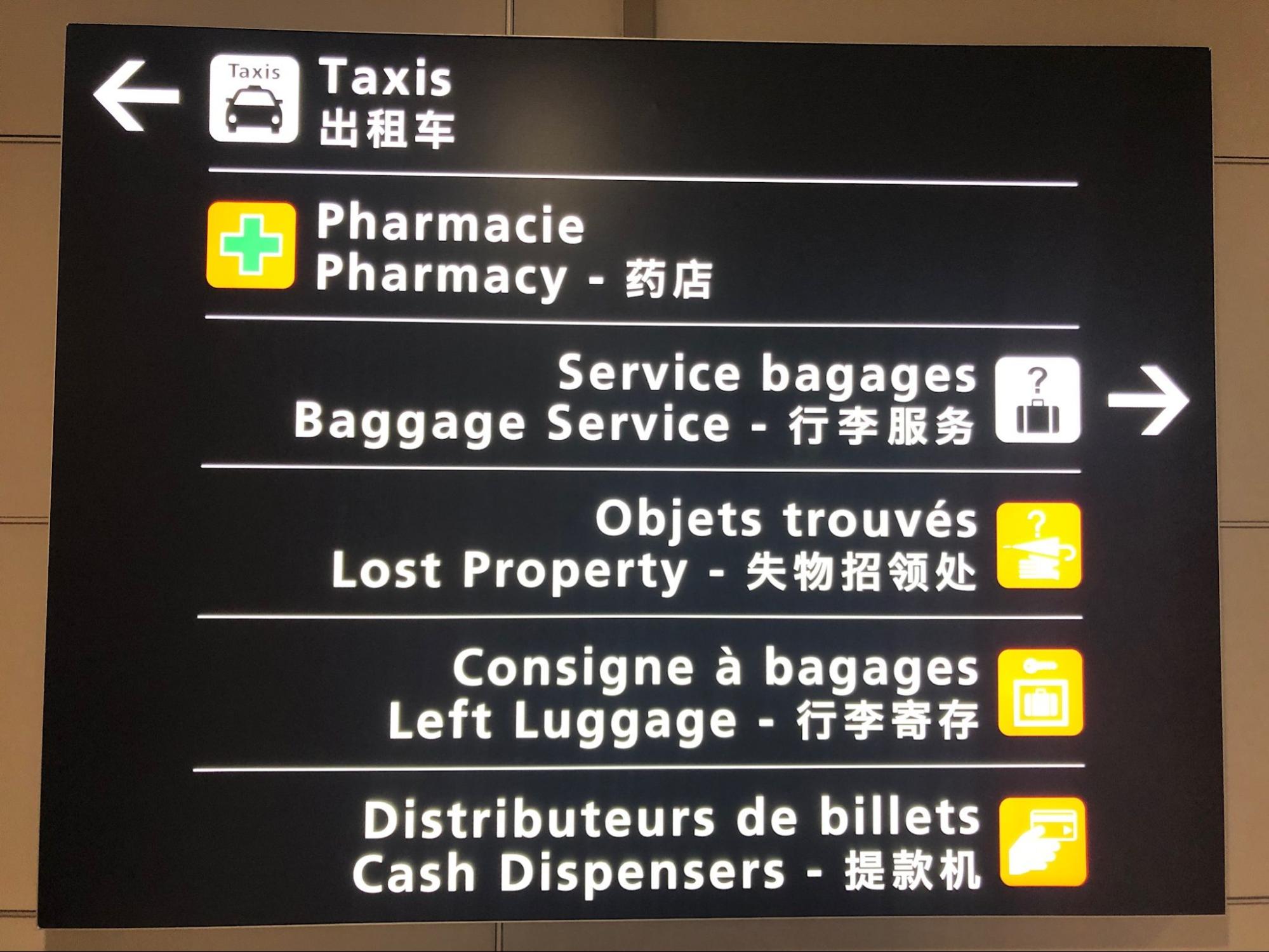1 CH 1 #JeSuis
Les objectifs du chapitre
In Chapter 1, you will:
- learn how to greet someone, ask how they are and say goodbye to someone
- identify which greetings are most appropriate depending on the time of the day
- read about la bise in Francophone countries
- reflect on cultural similarities and differences in the ways in which people greet one another and negotiate personal space
- introduce yourself (or someone else)
- reflect on cultural stereotypes and why it’s important to challenge and move beyond them
- tell someone what you study (or what someone else studies)
- learn about definite / indefinite articles
- learn and use the verb to be / être
- learn gender & number marking
- learn about various professions and the gender associated with them
- readily recognize and use the numbers up to 69
- describe a classroom, what is around you
- tell someone the date, date of your birthday
- gather some basic information from authentic written and audio documents
At the end of the chapter you will revisit this list to assess your learning.
Week 1 Day 1
On se familiarise avec le vocabulaire
Click below for useful vocabulary and activities to get you started with the chapter. Ch 1 On se familiarise avec le vocabulaire Ready for a crossword ? Mots croisés CH 1
On fait connaissance
1. C’est qui ?
A. On regarde
Le vocabulaire utile:
|
Je me présente … |
Je m’appelle … |
Je suis de … |
Let’s begin!
First time hearing French? No problem! Watch the vidéo several times and try your best to pick out some words and details!
Once you have listened to the video at least twice, complete the following sentences:

How did you do? Was it easier to understand after you had listened to it several times?
 Repeated listening is crucial for language learning—it strengthens comprehension, trains the brain to recognize patterns, and refines the ability to distinguish unfamiliar sounds. The more you hear, the more naturally the language starts to take shape in your mind.
Repeated listening is crucial for language learning—it strengthens comprehension, trains the brain to recognize patterns, and refines the ability to distinguish unfamiliar sounds. The more you hear, the more naturally the language starts to take shape in your mind.
B. On écrit
Complete the following sentences:
|
Je me présente, je m’appelle |
|
(prénom et nom) |
|
Je suis de |
|
(ville =city) |
|
J’étudie |
|
(matières =subjects) |
C. On papote
Introduce yourself to two of your partners using the sentences above and listen as they introduce themselves to you. Complete the following sentences according to the information you hear.
|
Personne # 1: Il / Elle / Iel s’appelle … Il / Elle / Iel est de … Il / Elle / Iel étudie … |
Personne # 2: Il / Elle / Iel s’appelle … II / Elle / Iel est de … Il / Elle / Iel étudie … |
♦♦ Variations sociales : bonjour, au revoir et bonne nuit
Bonjour is the functional equivalent of Hello, but Americans and French are quite different pragmatically in how and who they say hello to. It is the default way of greeting someone when you meet them during the daytime hours, while Bonne journée is what you say to them when taking leave (=have a nice day!)
For instance, in retail and service transactions (people you do not already know), Americans often do not greet the person who is helping them and instead get straight to business, asking questions and making demands. In France, this is considered rude because you did not acknowledge the person helping you before starting to make demands of them.
A general rule of thumb is to always greet folks in service encounters with a quick Bonjour when arriving and a quick Au revoir when leaving, even if you are just browsing in a store for a short period of time. Privately owned shops and restaurants are viewed as personal spaces in France, and entering, occupying and leaving them requires appropriate acknowledgement of the hosts.
While greeting folks in service encounters is a must in France, smalltalk of the type (Hi, how are you doing? You look so stylish in that dress!) is discouraged. It is seen as insincere and inappropriate for the circumstances.
Among people you already know, it is polite to greet them with bonjour or equivalent when you first see them for the day; you do not need to say bonjour to them again after taking short periods of leave. It is also polite to announce your departure among people you know with an Au revoir or equivalent.
Bonsoir is the default way of wishing someone a good evening when greeting them, while Bonne soirée is what you say when taking leave (=have a nice evening). Bonne nuit, however, also has its own special usage. Although it is the functional equivalent of Good night, you only use it when you are headed directly to bed after taking leave from the person / people you have just said it to.
To learn more about the power of bonjour:
Let’s practice!
To check your understanding, match the situations below with the appropriate greetings: Bonjour! Bonne journée! Au revoir! Bonsoir! Bonne soirée! Bonne nuit!
Week 1 Day 2
Time to learn more ways of greeting someone in French, asking them where they are from and how they are doing.
Le vocabulaire utile : les salutations
2. Les salutations formelles
A. On observe
How do you mark formality when you speak to someone in your language? Please explain. In French we use le vouvoiement, or the use of the pronoun “vous,” which is modeled in the dialogue below.
Read and repeat the dialogue below, and use it as a model to greet three students formally. Tell them your name, ask about theirs and ask them how they are doing and say goodbye.
|
X: Bonjour, je m’appelle … Et vous, comment vous vous appelez ? |
|
Y: Moi, je m’appelle … |
|
X: Comment allez-vous ? |
|
Y: Je vais très bien (bien / pas mal / mal), merci. Et vous ? |
|
X: Je vais très bien (bien / pas mal / mal), merci. |
|
Y: Enchanté / Enchantée et au revoir ! |
3. Les salutations familières
A. On observe
How do you mark informality when you speak to someone in your language? In French we use le tutoiement, or the use of the pronoun “tu,” which is modeled in the dialogue below.
Step 1. Read the dialogue below, and use it as a model to greet two students that you haven’t talked to yet. Tell them your name, ask about theirs and ask them how they are doing. Tell them you will see them soon.
| X: Salut, moi c’est…. Et toi (comment tu t’appelles) ? |
| Y: Moi, c’est…. |
| X: Comment vas-tu ? (Comment ça va ?) |
| Y: Je vais (très bien / pas mal / mal). Et toi ? |
Step 2.
Compare the two dialogues (formal and informal) above and underline the differences. What differences do you notice? How would you explain to a friend who does not speak French how to be formal or informal in French based on your observations?
Here’s a lighthearted meme showing the importance of politeness when ordering coffee in a French restaurant. How much can you save by mastering formal versus informal greetings?
B. On s’entraine
Lets’ pracice!
Getting ready to greet someone in French? Give logical responses to the following greetings or farewells.
 Learning a language in its cultural context helps your brain connect words to real-life meaning, emotions, and social norms. It enhances comprehension, deepens retention, and trains you to use the language naturally, just like a native speaker. Here’s how to greet someone in French like a native—don’t be shy about kissing cheeks, but how many times is the question!
Learning a language in its cultural context helps your brain connect words to real-life meaning, emotions, and social norms. It enhances comprehension, deepens retention, and trains you to use the language naturally, just like a native speaker. Here’s how to greet someone in French like a native—don’t be shy about kissing cheeks, but how many times is the question!
♦♦ Variations sociales : on se fait la bise?
According to A Guide to Kissing Etiquette Around the World | Condé Nast Traveler, people kiss each other on the cheek when they meet in many countries. In French, it is called La bise or Faire la bise. How to faire la bise is complicated for everybody. Usually women who are friends kiss each other to greet one another, while men and mixed couples may perform a combination of kissing or handshaking , depending on their level of acquaintance. A kiss or handshake is also commonly given upon leaving, even if the two parties have been together for only a few minutes. Watch this video about French kissing: French kissing culture: The ins and outs of ‘la bise’
Read more on the topic:
Can you guess correctly?

Refer to The propensity of cheek-based kisses in France, mapped – Vox and answer the following questions.
You observe some friends meeting each other in the park and watch them giving la bise. Based on the number of bises you see them exchange, where could they be from?
4. Comment ça s’écrit ?
A. On écoute et on répète
Listen to your instructor pronounce each letter and repeat or listen to this YouTube video to learn and practice the pronunciation of the French alphabet :
| a | [a] | n | [ɛn] |
| b | [be] | o | [o] |
| c | [se] | p | [pe] |
| d | [de] | q | [ky] |
| e | [ə] | r | [ɛʁ] |
| f | [ɛf] | s | [ɛs] |
| g | [ʒe] | t | [te] |
| h | [aʃ] | u | [y] |
| i | [i] | v | [ve] |
| j | [ʒi] | w | [dublə ve] |
| k | [ka] | x | [iks] |
| l | [ɛl] | y | [i gʁɛk] |
| m | [ɛm] | z | [zɛd] |
 French accents are not just marks on letters—they’re essential guides to pronunciation, meaning, and the musical rhythm of the French language. There are five main types of accents: l’accent aigu (é), l’accent grave (è, à, ù), l’accent circonflexe (â, ê, î, ô, û), la cédille (ç), and le tréma (ë, ï, ü), each playing a unique role in pronunciation and meaning.
French accents are not just marks on letters—they’re essential guides to pronunciation, meaning, and the musical rhythm of the French language. There are five main types of accents: l’accent aigu (é), l’accent grave (è, à, ù), l’accent circonflexe (â, ê, î, ô, û), la cédille (ç), and le tréma (ë, ï, ü), each playing a unique role in pronunciation and meaning.
- The acute accent (´), l’accent aigu, and the grave accent (`), l’accent grave, are used to indicate the quality of the vowel sound represented by the letter e.
- For example, café uses the acute accent while mère (=mother) uses the grave accent.
- When used with letters other than e, the grave accent does not indicate a sound difference but serves to distinguish the different words which may have the same spelling but different meanings.
- For example, ou without the grave accent is a conjunction and means “or” while où with the grave accent can act as an interrogative pronoun, meaning “where,” or a relative pronoun, meaning “where/ when.”
- The circumflex (ˆ), l’accent circonflexe, arose historically as a marker for vowels, which were followed by another letter (usually s) in an earlier state of the language.
- For example, a hotel in French carries the circumflex – hôtel.
- The cedilla (ç), la cédille, is used only with the letter c to indicate the sound [s] when it is followed by the letters a, o, or u.
- For example, leçon is pronounced like [l(ə)sɔ̃].
- The dieresis (¨), le tréma, is used with vowels to indicate that they are pronounced separately from a preceding vowel.
- For example, corn in French is called maïs and it is pronounced like [mais].
Practice by singing the French alphabet!
Do you remember singing the ABC song in English? You can do the same by singing the alphabet song in French.
To learn more and practice, go to: les accents. For more practice go to Ch 1 | L’alphabet. Projet de classe: Concours de l’abécédaire
B. On pratique
Step 1. Introduce yourself to a partner who will ask you to spell your first name (le prénom) and last name (le nom).
Write down each other’s first and last names.
|
Modèle : |
|
|
Salut, je m’appelle Kylian Mbappé. |
|
|
Mbappé, ça s’écrit comment ? |
|
|
M-B-A-P-P-É. |
|
|
Kylian, ça s’écrit comment ? |
|
|
K-Y-L-I-A-N. |
Step 2.
Check to see that your partner spelled your first name (le prénom) and last name (le nom) correctly and be prepared to spell your partner’s name to the class.
|
Il / Elle / Iel s’appelle …, ça s’écrit … |
Week 2 Day 1
Vocabulaire utile : les présentations
 Carnet personnel✍️
Carnet personnel✍️
Keeping a personal journal (un carnet personnel) is a fantastic way to support your learning of French. In this notebook, you’ll jot down:
- 🗣️ New vocabulary – not just individual words, but full phrases to help you remember them in context
- 📚 Grammar points – rules, examples, and exceptions you encounter
- 🌍 Cultural notes – interesting facts or observations about French-speaking cultures
- 💬 Imagined dialogues – short conversations between you and others, to practice real-life communication
Throughout the textbook, you’ll see prompts labeled “Carnet personnel.” These are invitations to reflect, create, and personalize your learning.
Here is the first imagined dialogue to write down in your Carnet personnel – Imagine you are meeting the host of your short-term rental and you both introduce yourself. Write a brief 5-6-sentence dialogue where you both exchange names, talk about where you’re from and ask each other a few more questions. In class, your instructor may ask you to share your dialogue with a partner and act it out.
Cultural Sterotypes
As you begin learning French, take a moment to reflect on any stereotypes you may have heard about French-speaking people—like the idea that all French people wear berets or eat baguettes every day.
Just like people from Wisconsin, Texas, or California are all different despite being American, French-speaking communities around the world are incredibly diverse. Some live in Europe, others in Africa, the Caribbean, or Canada, and each place has its own cultures, traditions, and ways of life.
It’s important to recognize that stereotypes, even if they seem harmless or funny, can be hurtful. Assuming someone fits a stereotype can make them feel unseen or disrespected. When you’re just starting to speak a new language, it’s okay to make mistakes—but being open, respectful, and observant can help. Pay attention to body language, tone, and social cues. If you’re unsure, it’s okay to ask politely or listen more before jumping in. This kind of awareness helps you grow not just as a language learner, but as someone who can connect across cultures with empathy and curiosity.
There are many video bloggers who tackle on this topic. Here is a YouTube video by Rosie McCarthy, better known online as Not Even French, is a New Zealander YouTuber who lives in Paris, France.
Now, take a moment to reflect on any cultural stereotypes you might have about French culture or French-speaking people. Think about where these ideas may have come from—media, school, jokes, or personal experiences—and why they might have stuck with you. How can you begin to shift your thinking to be more open-minded, curious, and respectful as you learn more about the real diversity of the Francophone world?
Qu’est-ce que tu étudies ?
Vocabulaire utile – Les matières
Here are how to say common subjects students study in school:
Do you remember how to spell the following subjects? Take turns asking your partner to spell the subjects below. When spelling, you must indicate the presence of an apostrophe (‘) by saying [apɔ stʁɔf] apostrophe.
A. On observe
Le, la, les and l’ are called definite articles. What is the English equivalent? Do you use it before nouns referring to academic subjects in English or other languages you know? Can you give two examples?
Step 1. Give the gender of each noun.
If you don’t remember a gender, refer back to the vocabulary flashcards above.
Step 2. Complete the following sentences.
#Grammaire #IntroductionToNouns
Cliquez ici, lisez les explications : introduction to nouns
B. Carnet personnel✍️
Imagine asking a classmate what they study and responding with one or more academic subjects. In your carnet personnel, you can write several short dialogues to practice this exchange. Try using both informal structures (with tu) when addressing a peer or friend, and formal structures (with vous) when speaking to someone you don’t know well or wish to show respect to. This will help you become more comfortable navigating different levels of formality in French conversation.
|
Modèle : |
|
|
Dialogue informel |
Dialogue formel |
|
X: Tu étudies quoi |
X: Qu’est-ce que vous étudiez |
|
Y: La compta et la psycho, et toi (and you) ? |
Y: La comptabilité et la psychologie, et vous (and you) ? |
|
X: La philo et la bio. |
X: La philosophie et la biologie. |
On analyse: les pronoms sujets
1. Singulier ou pluriel ?
First, listen to the recording and decide if the following sentences are singular or plural.
Now, listen again and write the sentence you hear.
2. On apprend
What is a subject pronoun? Why and when do we use them?
Look at all the activities you have completed before and try to find the appropriate French pronouns to complete this list (you may or may not be able to complete the entire list):
|
|
|
*There is no pronoun meaning “it” in French. Inanimate nouns are either masculine or feminine, requiring the use of “il” or “elle,” e.g., le portable (m.) = il, la chaise (f.) = elle
#Grammaire #PronomsSujets Cliquez ici, lisez les explications et complétez les activités : subject pronouns
3. On s’entraîne
Using a search engine or people you know, find real-world examples of people that correspond to the pronouns in the following sentences:
Modèle :
|
Iels sont chanteurs / chanteuses |
Iels = Sam Smith & Demi Lovato. |
Now, it is your turn:
| Je suis étudiant/ étudiante.
Tu es dans la salle de classe. Il est étudiant. Elle est étudiante. Iel est acteur / actrice. On est étudiant. Nous sommes étudiantes / étudiants. Vous êtes professeur / professeure. Vous êtes étudiantes / étudiants. Ils sont dans la salle de classe. Elles sont journalistes. Iels sont artistes. |
Je = …
Tu = … Il = … Elle = … Iel = … On = … Nous = … Vous = … Vous =… Ils = … Elles = … Iels = … |
Share and compare your lists with your partner(s) or write them down in your Carnet personnel.
 Repetition strengthens neural pathways, making language recall faster and more automatic. Repetite exercises help lock in pronunciation and grammar, turning effort into instinct. To make it fun, try saying the same phrase with different emotions—happy, sad, excited, or annoyed. You can also change the speed, like a slow-motion whisper or a rapid-fire burst. It keeps practice engaging and trains your brain to adapt!
Repetition strengthens neural pathways, making language recall faster and more automatic. Repetite exercises help lock in pronunciation and grammar, turning effort into instinct. To make it fun, try saying the same phrase with different emotions—happy, sad, excited, or annoyed. You can also change the speed, like a slow-motion whisper or a rapid-fire burst. It keeps practice engaging and trains your brain to adapt!
What do you think about this conversation?
♦♦ Variations sociales : pronoms non-binaires
You have probably already noticed that nouns (=words for things) in French are often described in terms of their grammatical gender, e.g. la/une chaise ‘the/a chair (f.)’ or le/un livre ‘the/a book (m.)’. The way words are categorized by their gender in grammar doesn’t have anything to do with whether they’re boy or girl things. It’s actually a leftover rule from Latin, which is the language that French came from.
Pronouns are little words used to replace nouns in order to improve the efficiency of communication, e.g.:
- The cat (noun) was sitting at the door.
- The cat (noun) was meowing.
- It (pronoun) looked hungry.
Pronouns traditionally reflect the same masculine/feminine binary categories found in nouns, e.g. il is used to mean ‘it’ when the noun is grammatically masculine; elle is used to mean ‘it’ when the noun is grammatically feminine.
The problem is that pronouns also refer to people, and humans have complex social identities that reflect their norms, behaviors, roles and relationships in the communities they are a part of. One of these social identities is gender. Because the same word is used to talk about (social) gender as (grammatical) gender, people often conflate the two. This is not a problem in languages like Finnish where all people use the same pronoun in grammar regardless of their social gender identity (all use hän), but it does create a problem in French because there are only two grammatical categories in the language and a variety of gender categories that someone might identify with. So how do French speakers who don’t identify with the masculine/feminine binary use grammar to talk about themselves? They innovate a new non-binary pronoun, known as iel.
Iel, pronounced “yell,” is a combination of il and elle, and is a common way for people who do not identify as masculine or feminine to refer to themselves in French. In English, speakers use the singular ‘they’ to do this, e.g., Someone just texted you! Oh, really? What did they want? Other languages with similar binary grammars have also innovated new forms to bring representation to non-binary individuals. In Swedish, for instance, speakers did something similar to French by innovating a novel form from the pre-existing forms in the grammar: hun = ‘she’, han = ‘he’, hen = non-binary ‘they’.
Iel is an innovative neopronoun that is gaining in popularity, but not all speakers in the francophone world recognize it, as with singular ‘they’ in English. Throughout this book, you will see iel regularly in exercises and activities. It is our hope that learners will understand the ways in which language can be changed to bring better representation to the people who use it and, in doing so, find the necessary tools to represent their own social identities when using French.
What are the non-binary pronouns in the other language(s) you speak ? What other ways are non-binary genders recognized in the grammar?
Week 2 Day 2
On découvre : le verbe « être »
1. Vrai ou faux ?
Are the following sentences true or false? In groups of three, one student will read the following statements, and the other two will react. Your group will report your answers to the class. For false statements, make sure to write the correct one. If you are working solo, write your answers and corrections on your own, and be ready to share them with the class.
2. On observe
Step 1. Ask your partners where they are from and group yourselves according to the city. You can also imagine a dialogue with some ofyour classmates and write it down in your Carnet personnel.
|
Modèle (informal): |
Modèle (formal): |
|
X: Tu es d’où ? Moi, je suis de Los Angeles. Et toi ? |
X: Vous êtes d’où ? Moi, je suis de Los Angeles. Et vous ? |
|
Y: Moi aussi ! Je suis de Los Angeles. |
Y: Moi aussi ! Je suis de Los Angeles. |
|
X: Super. Cool ! |
X: Enchantée / Enchanté ! |
|
Continue to next person |
Continue to next person |
|
X: Et toi, tu es d’où ? |
X: Et vous, vous êtes d’où ? |
|
Z: Moi je suis de Chicago. |
Z: Moi je suis de Chicago. |
|
X: Et moi de Los Angeles, ciao ! |
X: Et moi de Los Angeles, au revoir ! |
Step 2. Il y a combien d’étudiants de chaque ville (each city) ? Il y a combien d’étudiants de Caroline du Sud, d’Oregon, de Floride, du Minnesota etc. ? Écrivez les résultats au tableau ou dans votre carnet personnel.
3. On écoute
Step 1. You have already seen many instances with the verb être in the previous activities. Use this knowledge to complete the following table:
Notice that “vous êtes” is pronounced with the sound [z] between the two words because of a phenomenon known as liaison. To learn more about liaison, visit: les symboles phonétiques, l’élision, la liaison.
 Carnet personnel✍️
Carnet personnel✍️
Être is the first French verb you will learn. As with all verbs that will follow, make sure to find the best way to learn them by heart (post-its all over your house, color-coded cards, sing a song like this YouTube song, etc.) Make sure to write down the conjugation of this verb in your Carnet personnel.
Writing verb conjugations by hand helps you memorize and internalize them more effectively. The physical act of writing engages your brain in a deeper way than just reading or typing. It reinforces muscle memory, improves focus, and helps you notice patterns in verb endings and tenses. This hands-on practice strengthens your recall and makes it easier to use verbs correctly when speaking or writing in French.
Step 2. On écoute la prononciation du verbe être et fais attention aux consonnes silencieuses (=silent consonant sounds).
Listen to the recording of the pronunication of the conjugation of the verb to be – être – in French and identify the letters that are written but not pronounced.
Step 3. Transcription phonétique. Using les symboles phonétiques, try to provide the phonetic transcription for each instance of être.
4. On apprend
A. Le verbe Être. #Grammaire #Être. Cliquez ici, lisez les explications et complétez les activités (une activité d’écoute) : être ‘to be’
B. Il / elle / iel fait quoi ? – Carnet personnel✍️
Review Le vocabulaire utile : les présentations
Answer the following questions according to the photos below. Write out the answer in a complete sentence in your Carnet personnel.
|
|
Qui est-ce ? |
Il / elle / iel est d’où ? Ils / elles / iels sont d’où ? |
Qu’est-ce qu’il /elle /iel fait ? Qu’est-ce qu’ils / elles / iels font ? |
|
|
C’est … Ça s’écrit : |
Elle est de … |
Elle est … |
|
|
|
|
|
|
“Jay Z Beyonce” by sashimomura |
|
|
|
À vous !
Bring a photo on your phone of a famous person that you like to class and be prepared to answer the above questions (who they are, where they are from, what they do for a living). You may want to bring a photo of your family member or a friend. In your Carnet personnel, write a short description of who this person is, how their name is written, where they are from and what they do.
 It’s essential to reuse newly learned language in contexts that are personally meaningful—talk about your life, your family, your friends, and the people around you. Why? Because doing so not only prepares you for real-life conversations with other French speakers, but also strengthens your memory and recall. Neuroscience research shows that when new information is connected to personal experiences or emotions, it activates deeper neural pathways and enhances long-term retention. Since it’s natural to want to share your own story, start practicing now—your brain will thank you!
It’s essential to reuse newly learned language in contexts that are personally meaningful—talk about your life, your family, your friends, and the people around you. Why? Because doing so not only prepares you for real-life conversations with other French speakers, but also strengthens your memory and recall. Neuroscience research shows that when new information is connected to personal experiences or emotions, it activates deeper neural pathways and enhances long-term retention. Since it’s natural to want to share your own story, start practicing now—your brain will thank you!
♦♦ Variations sociales: feminine job titles
Many job titles in French are used in the masculine form, even if the person they describe is feminine or nonbinary, e.g. le médecin ‘doctor’, le professeur ‘professor’. Some titles have established feminine forms, e.g. une infirmière ‘ a nurse (f)’, une directrice ‘a director (f)’, but the vast majority do not. In the latter part of the 20th century, following the large-scale participation of women in the workforce outside of the home, several francophone areas (Belgium, Quebec and France) published official lists of proposed feminine job titles to help speakers adopt the new language necessary to more justly reflect the participation of women in the professional sphere.
Following the formation of adjectives in French, most forms are created via one of the following strategies:
- changing the article from le/un to la/une, e.g. le juge → la juge ‘judge’
- adding an -e, e.g. un député → une députée ‘deputy’
- adding an -` and an -e, e.g. un préfet → une préfète ‘prefect/principal’
- changing -teur to -trice, e.g. un auteur → une autrice ‘author’
- changing -eur to -euse, e.g. un chanteur → une chanteuse‘singer’
In some cases, multiple forms can co-exist for the same word, e.g. auteur, auteure, autrice ‘author’, and individuals or communities select the form that best suits them.
Quebec first proposed the use of feminine job titles in 1979, France in 1984 (although the initiative stalled until new government leadership in 1998) and Belgium in 1993. Although the forms have been used at variable rates throughout the francophone world since the 1980s, the Académie française (the society / council aimed at slowing linguistic change in France)
did not officially recognize them until 2019.
How do other languages represent gender in job titles? Cite examples from other languages you speak / have studied. Is there disagreement in how gender should be represented in these forms?
Choose one of the sites listed below, read the information and write a 5-sentence report on what you learned regarding the representation of feminine job titles in French.
To learn more, check out:
- Office québécois de la langue française
- France says ‘oui’ to feminine job titles | World Economic Forum
- Your Complete Guide to Professions in French: From Common Job Names to Formal Titles and Abbreviations | FluentU French
- La Traducteure: Feminization of Professions in French – Yabla French – Free French Lesson
- Le mot juste: To make women feel welcome at work, France tries … semantics – CSMonitor.com
- French Professions – Lawless French Vocabulary – Métiers
On découvre et on analyse : les articles définis
1. On écoute
A. C’est masculin ou féminin?
Listen to the recording and decide if the following words are masculine or feminine.
Modèle: You hear – la chaise, you select masculin ou féminin
B. C’est singulier ou pluriel ?
Listen to the recording and decide if the following words are singular or plural.
Modèle: You hear – la porte, you select singulier ou pluriel.
2. On apprend : les article définis
#Grammaire #DefiniteArticles
Cliquez ici, lisez les explications et complétez les activités : determiners: definite articles
3. On pratique
Voilà la salle de classe de Mme Luminita :

Complete the following paragraph with the appropriate definite article: le, la, l’ or les.
On s’éclate en musique !
Let’s discover francophone music!
NB: You will need a Spotify account in order to access the playlist via link. If you don’t have one, you may use the screenshots of the #OnYGo playlist below.
Before we start, as a group, discuss your personal taste in music. Which artists / songs (=chanson) do you listen to right now? What type of music do you like?
Découvrez notre playlist sur Spotify : #OnYGo! playlist
Optional activity in your Carnet personnel✍️
Choisissez deux chansons de deux artistes différents et répondez aux questions ci-dessous [Choose two songs by two different artists and answer the questions below] :
-
-
- What’s the name of this band or singer?
- What is/are their nationalities?
- What type of music is it?
- What is the song title? The album title?
-
Now use an online translator and translate the title of the song. Would it be a good title in English?
Artiste #1 Chanson #1
|
a. _____________________________________
b. _____________________________________
c. _____________________________________
d. _____________________________________ |
Artiste #2 Chanson #2
|
a. _____________________________________
b. _____________________________________
c. _____________________________________
d. _____________________________________ |
Week 2 Day 3
On découvre : une salle de classe
Le vocabulaire utile: La salle de classe et les instructions
Let’s practice the vocabulary you’ll need to describe what you might see in a classroom:
Now, let’s practice the kinds of instructions you might hear in a classroom:
1. On observe : une chaise, un stylo et des tablettes
Sur le bureau, il y a …
Step 1.
Look at the picture and complete the following paragraph with the appropriate indefinite article: un, une, or des.
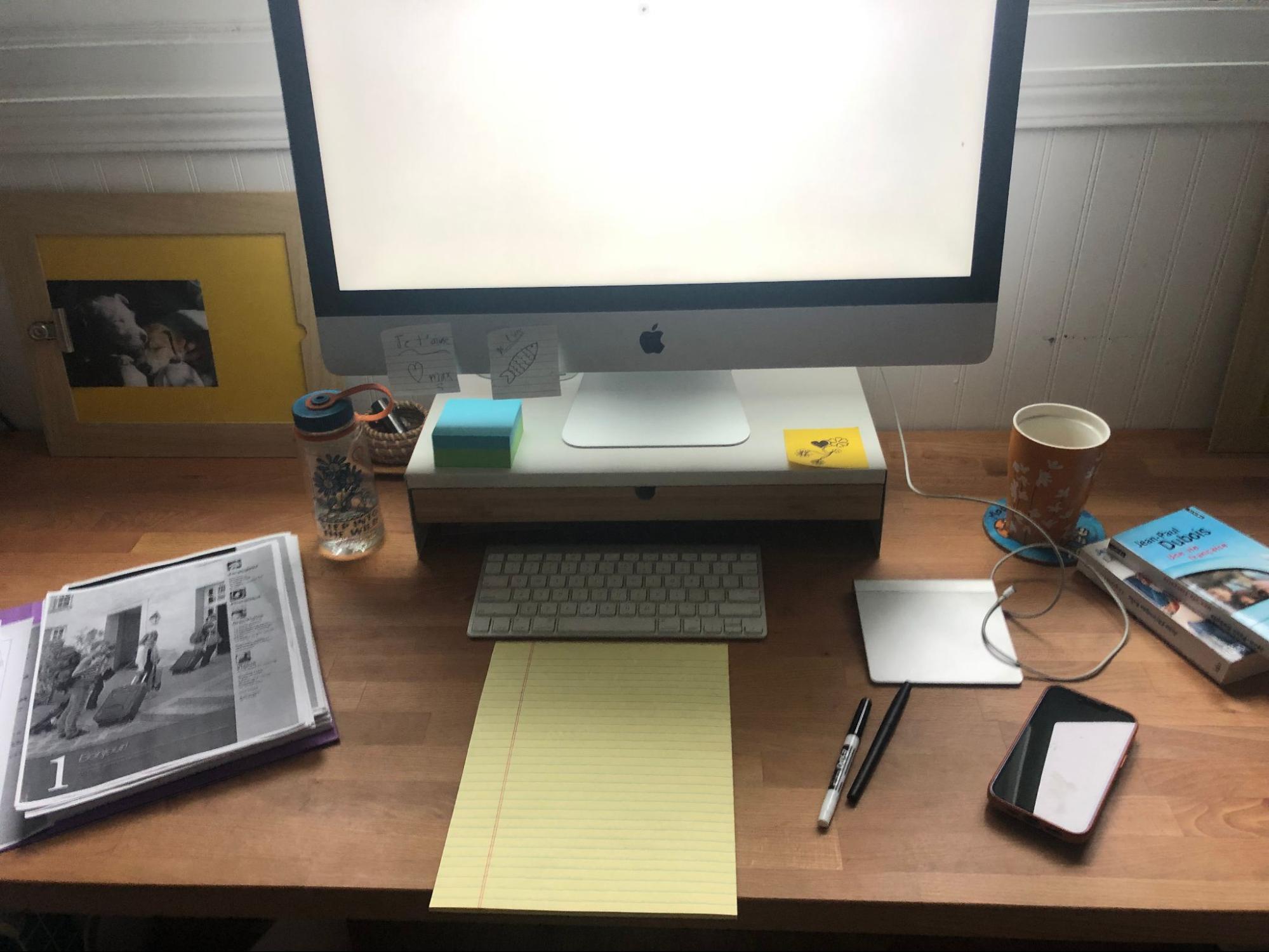
Step 2.
Look at the underlined elements: un bureau, une carte, une chaise, une tablette, un ordinateur, un tableau
Step 3.
Look at the following pairs. What is the difference between the words in each pair?
| un ordinateur | des ordinateurs |
| une application | des applications |
| un cahier | des cahiers |
| une chaise | des chaises |
| un campus | des campus |
You guessed correctly, des is used when the noun (masculine or feminine) is plural.
Step 4.
Look at the last sentence : il n’y a pas de lunettes.
What do you notice? De replaces des in a negative sentence!
Step 5.
Let’s practice. What do you see on this photo?
Step 6.
Now it is your turn – write in your Carnet personnel✍️ ! Qu’est-ce qu’il y a sur votre bureau et notez une chose qu’il n’y a pas.
|
Picture or drawing of your desk |
Sur mon bureau, il y a…
Sur mon bureau, il n’y a pas de
|
2. On apprend
#Grammaire #LesArticlesIndéfinis. Cliquez ici, lisez les explications et complétez les activités : determiners: indefinite articles
3. On s’entraîne
A. C’est masculin ou féminin ?
Listen and decide if the following words are masculine or feminine.
Modèle : You hear une porte, you select masculin ou féminin.
B. C’est singulier ou pluriel ?
Listen and decide if the following words are singular or plural.
Modèle : You hear des cahiers, you select singulier ou pluriel.
C. On écoute et on écrit : #dictogloss
Step 1.
Working in small groups, read through the text first and predict the words that you expect to be in the blanks. Then listen as your instructor reads a dialogue between Mme Luminita and her students and reconstruct the text with as many details as possible.
Refer back to le vocabulaire utile : les instructions, if you need help.
Step 2.
Now, compare the two sentences:
Il y a des lunettes dans le sac / There are sunglasses in the bag
What do you notice about the bolded sections in these two sentences?
You’re right! Il y a can be translated as both “there is” and “there are” in English because it literally means “it has there” in French—a fixed expression used to indicate the preence of something.
Step 3.
#Grammaire #Voilà. Cliquez ici, lisez les explications et complétez les activités : voilà vs. il y a
Step 4.
Répondez aussi à la question de Mme Luminita: qu’est-ce qu’il y a dans votre sac à dos et notez une chose qu’il n’y a pas. Write the answers in your Carnet personnel✍️
|
|
Dans mon sac à dos, il y a…
Dans mon sac à dos, il n’y a pas de
|
E. Une salle de classe à Compiègne
Voici la photo d’un amphi (amphithéâtre) d’un cours magistral (=lecture) à l’Université de Technologie de Compiègne. To learn more about this university, explore its official website – https://www.utc.fr/.
“File:Université de Technologie de Compiègne – amphi cours magistral tableaux.jpg” by Basile Morin is licensed under CC BY-SA 4.0
Write the answers in your Carnet personnel✍️:
Step 1. Où est Compiègne ?
_____________________________________
Step 2. Write the names of at least three objects or people that you see in the picture. Remember to add the appropriate indefinite article: un, une, or des.
Sur la photo, Il y a ……
1. _____________________________________
2. _____________________________________
3. _____________________________________
Step 3. Compare the classroom above to a typical classroom where you live. What is similar or different?
_____________________________________
4. On traduit
Let’s translate from English to French:
En français, comment dit-on ?
Week 3 Day 1
On s’ouvre au monde : les pays francophones
Step 1:
Answer the following questions:
- What is your native language (=langue maternelle)?
_____________________________________
- Do you speak a second language (=deuxième langue)?
_____________________________________
- Is there another language commonly spoken in your country?
_____________________________________
Step 2:
Watch the video and answer the questions: Où parle-t-on le français
Step 3 :
With a partner, choose 3 francophone countries from 3 different continents and find the following information (use internet if necessary):
File:New-Map-Francophone World.PNG – Wikimedia Commons
https://lelephant-larevue.fr/dossiers/carte-de-francophonie/
- la capitale
- le chef d’état (président)
- la fête nationale
- les langues parlées
- la population
- la monnaie nationale
On découvre : les nombres cardinaux
1. On observe – Les chiffres et les nombres, c’est quoi la différence ?
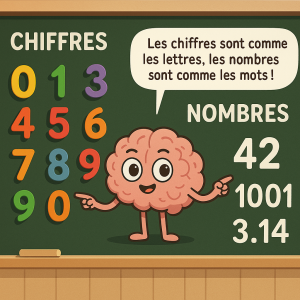
In French, un chiffre is a a single digit, like 0 through 9, while un nombre is a full number, which can be made up of one or more digits. So, think of chiffres as the building blocks or letters, and nombres as the finished numbers or complete words.
2. On écoute et on apprends
To learn and practice how to say les chiffres et les nombres de zéro à 20, it is useful to learn about phonetic transcription. Why? Because phonetic transcription (like the International Phonetic Alphabet, or IPA) is a powerful tool for language learners as it shows exactly how a word is pronounced, regardless of spelling. French spelling can be tricky—many letters are silent or pronounced differently than in English. Transcription helps you:
- See which sounds are actually spoken.
- Understand nasal vowels, silent letters, and liaisons.
- Practice accurate pronunciation from the start.
Here, you’ll see how French numbers are written, how they’re pronounced using phonetic transcription, and you’ll be able to hear them through audio recordings.
| Les chiffres : | Les nombres : |
| 0 : zéro [zeʁo] | 10 : dix [dis] |
| 1 : un [œ̃] | 11 : onze [ɔ̃z] |
| 2 : deux [dø] | 12 : douze [duz] |
| 3 : trois [tʁwɑ] | 13 : treize [tʁɛz] |
| 4 : quatre [katʁ] | 14 : quatorze [katɔʁz] |
| 5 : cinq [sɛ̃k] | 15 : quinze [kɛ̃z] |
| 6 : six [sis] | 16 : seize [sɛz] |
| 7 : sept [sɛt] | 17 : dix-sept [disɛt] |
| 8 : huit [ɥit] | 18 : dix-huit [dizɥit] |
| 9 : neuf [nœf] | 19 : dix-neuf [diznœf] |
| 20 : vingt [vɛ̃] |
 In French, the numbers from 11 to 16—onze, douze, treize, quatorze, quinze, and seize—are unique words that must be memorized, as they do not follow a regular pattern. These forms have Latin roots: for example, onze comes from Latin undecim (one plus ten), and douze from duodecim (two plus ten). Starting at 17, French becomes more transparent: dix-sept (10 + 7), dix-huit (10 + 8), and dix-neuf (10 + 9) are compound numbers formed by combining dix (ten) with the appropriate unit. This shift reflects a historical evolution from Latin-based forms to more logical, additive constructions. The number 20, vingt, comes from Latin viginti, and marks the beginning of a new counting pattern. This mix of inherited and constructed forms gives French numbers their distinctive rhythm and structure.
In French, the numbers from 11 to 16—onze, douze, treize, quatorze, quinze, and seize—are unique words that must be memorized, as they do not follow a regular pattern. These forms have Latin roots: for example, onze comes from Latin undecim (one plus ten), and douze from duodecim (two plus ten). Starting at 17, French becomes more transparent: dix-sept (10 + 7), dix-huit (10 + 8), and dix-neuf (10 + 9) are compound numbers formed by combining dix (ten) with the appropriate unit. This shift reflects a historical evolution from Latin-based forms to more logical, additive constructions. The number 20, vingt, comes from Latin viginti, and marks the beginning of a new counting pattern. This mix of inherited and constructed forms gives French numbers their distinctive rhythm and structure.
Phonetic transcription helps you match sounds to spelling and improves your pronunciation. To learn more about phonetic transcription and practice with audio, check out these sites:
- 🎧 EasyPronunciation – French Pronunciation Trainer: Offers HD audio and phonetic transcriptions for thousands of words.
- 📘 Français Interactif – Phonétique: A great resource with audio, IPA symbols, and structured lessons.
- 🗣️ Fonetix: Interactive exercises and tools for learners and teachers focused on French pronunciation.
French numbers from 0 to 20
3. On pratique
Let’s practice !
Time to sing the numbers with this YouTube video! Practice always makes better, but fun practice makes it even better. 😉🎶
And now, try to pronounce the numbers yourself.
4. On continue à apprendre
French numbers from 21 to 69 follow a more regular and logical pattern, though with a few quirks. Numbers like 21, 31, 41, 51, and 61 use the conjunction “et” before un (e.g., vingt-et-un, trente -et-un), a holdover from older French usage. For other numbers, the pattern is straightforward: the tens word (like vingt for 20, trente for 30, quarante for 40, etc.) is followed by a hyphen and the unit (e.g., vingt-deux, trente-cinq, cinquante-huit). These forms reflect a decimal-based system influenced by Latin and reinforced during the French Revolution, which emphasized rational, base-10 structures. This regularity makes numbers in this range easier to learn and predict, especially compared to the more complex system used for numbers 70 and above.
In phonetic transcription, a dot (·) placed between syllables or parts of a word typically indicates a slight pause—not long enough to signal a new word, but still perceptible. It’s similar to the kind of pause you might make when you’re catching your breath. Think of it as a momentary hesitation or a tiny break in the flow of speech.
| 20 : vingt [vɛ̃] | 30 : trente [tʁɑ̃t] |
| 21 : vingt-et-un [vɛ̃.te.œ̃] | 31 : trente-et-un [tʁɑ̃.te.œ̃] |
| 22 : vingt-deux [vɛ̃.dø] | 32 : trente-deux [tʁɑ̃t.dø] |
| 23 : vingt-trois [vɛ̃.tʁwa] | 33 : trente-trois [tʁɑ̃t.tʁwa] |
| 24 : vingt-quatre [vɛ̃.katʁ] | 34 : trente-quatre [tʁɑ̃t.katʁ] |
| 25 : vingt-cinq [vɛ̃.sɛ̃k] | 35 : trente-cinq [tʁɑ̃t.sɛ̃k] |
| 26 : vingt-six [vɛ̃.sis] | 36 : trente-six [tʁɑ̃t.sis] |
| 27 : vingt-sept [vɛ̃.sɛt] | 37 : trente-sept [tʁɑ̃t.sɛt] |
| 28 : vingt-huit [vɛ̃.ɥit] | 38 : trente-huit [tʁɑ̃t.ɥit] |
| 29 : vingt-neuf [vɛ̃.nœf] | 39 : trente-neuf [tʁɑ̃t.nœf] |
| 40 : quarante [kaʁɑ̃t] | 50 : cinquante [sɛ̃kɑ̃t] |
| 41 : quarante-et-un [kaʁɑ̃.te.œ̃] | 51 : cinquante-et-un [sɛ̃kɑ̃.te.œ̃] |
| 42 : quarante-deux [kaʁɑ̃t.dø] | 52 : cinquante-deux [sɛ̃kɑ̃t.dø] |
| 43 : quarante-trois [kaʁɑ̃t.tʁwa] | 53 : cinquante-trois [sɛ̃kɑ̃t.tʁwa] |
| 44 : quarante-quatre [kaʁɑ̃t.katʁ] | 54 : cinquante-quatre [sɛ̃kɑ̃t.katʁ] |
| 45 : quarante-cinq [kaʁɑ̃t.sɛ̃k] | 55 : cinquante-cinq [sɛ̃kɑ̃t.sɛ̃k] |
| 46 : quarante-six [kaʁɑ̃t.sis] | 56 : cinquante-six [sɛ̃kɑ̃t.sis] |
| 47 : quarante-sept [kaʁɑ̃t.sɛt] | 57 : cinquante-sept [sɛ̃kɑ̃t.sɛt] |
| 48 : quarante-huit [kaʁɑ̃t.ɥit] | 58 : cinquante-huit [sɛ̃kɑ̃t.ɥit] |
| 49 : quarante-neuf [kaʁɑ̃t.nœf] | 59 : cinquante-neuf [sɛ̃kɑ̃t.nœf] |
5. On pratique encore
Let’s practice again !
Time to sing again the numbers 20-50 with this YouTube video! You love singing, right? 😆🎶

Singing in a foreign language can boost pronunciation because it activates both sides of the brain—language on the left and melody on the right—creating stronger neural connections. The rhythm and repetition in songs help learners internalize sounds more accurately, while also training the muscles used in speech. Plus, music makes learning more memorable and fun, which enhances retention.
And now, try to pronounce the numbers yourself.
Do you remember how to write all these numbers? Let’s see.
Voici un petit exercice sympa pour vous aider à pratiquer l’écriture des nombres en lettres en français, tout en découvrant des pays francophones à travers le monde. 🌍✍️[Here’s a fun little exercise to help you practice writing numbers in French words, while also learning about Francophone countries around the world.]
6. On continue à apprendre
You’re about to learn how to count from 60 to 69 in French — and this is the last stretch before things start to change a bit. From 20 to 59, you’ve probably noticed a nice, regular pattern in how French numbers are formed. So take a moment to enjoy that regularity — because after 69, French numbers start to get a little more creative! 😊
| 60 : soixante [swasɑ̃t] |
| 61 : soixante-et-un [swasɑ̃t.te.œ̃] |
| 62 : soixante-deux [swasɑ̃t.dø] |
| 63 : soixante-trois [swasɑ̃t.tʁwa] |
| 64 : soixante-quatre [swasɑ̃t.katʁ] |
| 65 : soixante-cinq [swasɑ̃t.sɛ̃k] |
| 66 : soixante-six [swasɑ̃t.sis] |
| 67 : soixante-sept [swasɑ̃t.sɛt] |
| 68 : soixante-huit [swasɑ̃t.ɥit] |
| 69 : soixante-neuf [swasɑ̃t.nœf] |
Let’s check how well you remember the French numbers from 0 to 69!
Écrivez les nombres suivants en lettres.
7. On calcule !
Write out the following math problems. Here are some common mathematical operators.
+ plus – moins = égale
Let’s practice!
First, calculare and write down the results:
Now, practice how to say the whole equations just like students in a French math class:
Quel est votre numéro préféré ou de chance (=your lucky number) ? _______________
7. On s’entraîne : Les numéros de téléphone
How would you explain to a foreigner how phone area codes work in the US? How do you tell a mobile phone number from a landline and other commercial numbers (toll free, etc.)?
Voici les indicatifs téléphoniques (=area codes) pour les numéros de téléphone fixes en France:
Babsy, CC BY 3.0
- Les numéros de téléphone ont 10 chiffres :
- Par exemple, 04-68-02-27-52 = [zéro quatre] – [soixante-huit] – [zéro deux] – [vingt-sept] – [cinquante-deux].
- This number is from a landline in the south east part of France.
- Les numéros de téléphone mobiles commencent par (start with) 06 ou 07.
- Par exemple, 06-08-34-56-10 =[zéro six] – [zéro huit] – [trente-quatre] -[cinquante-six] – [dix].
- This number is from a mobile phone.
Let’s practice!
Listen as the teacher gives the addresses and telephone numbers of three people and complete the table below:
Modèle :
You hear: Bastien, son adresse c’est le 15 rue de la Libération et son numéro c’est le 04-61-02-27-52.
You write: 15 and 04-61-02-27-52
In the European Union, there is one number to call for emergencies: 112. What is the number to call for an emergency in your country? Can you say it in French?
To practice more go to: Les numéros de téléphone
To know more: C’est quoi, les numéros d’urgence ? – 1jour1actu.com
For fun: watch this clip made by Swiss firefighters to raise awareness about the correct number to dial in case of emergency:
118 Projec’t – LE CLIP OFFICIEL des Pompiers Suisse Romand
8. On lit
Lisez (=read) les deux dialogues et ensuite écoutez et répétez avec votre partenaire.
| Dialogue informel | Dialogue formel |
| X: C’est quoi ton numéro ? | X: Quel est votre numéro ? |
| Y: C’est le 06 10 56 67 30. Et toi ? | Y: C’est le 06 10 56 37 30 et vous ? |
| X: C’est le 07 57 65 43 21. | X: C’est le 07 17 65 43 21. |
| Y: Merci. | Y: Merci. |
9. On y go !
A. Imaginez un numéro de téléphone français (write it down and hide it). Now act out each of the dialogues with a partner.
_________________________________
B. Given that you have only learned to count up to 69, how could you try to say your number in French?
_________________________________
10. Les numéros de téléphone dans les pays francophones
Choose a francophone country (Benin, Belgium, Ivory Coast, Senegal, Switzerland, Morocco…) and research the format they use for phone numbers and emergency numbers (hospital, police, fire department, etc.). Share your findings with your partners. Which system is most like the country you live in?
To learn more and practice what French numbers, consider consulting these Internet resources:
- 🔗 Lawless French – Phone Number Practice
This site offers excellent listening exercises to help students understand and pronounce French phone numbers, typically spoken in pairs. It includes audio files, transcripts, and interactive practice. - 🔗 French with Elise – Francophone Resources
This site provides engaging resources about Francophone countries, helping students understand regional differences—including how phone numbers vary across the Francophone world. - 🔗 Coffee Break French
A popular podcast for learners at all levels, Coffee Break French includes episodes that explore everyday communication, including how to give and understand phone numbers in French. It’s conversational, clear, and includes cultural insights.
11. On traduit
Comment dit-on ? Translate the following sentences.
Week 3 Day 2
On découvre : la date
1. On observe
Le vocabulaire utile: La date
A. Les jours fériés et les fêtes.
Look at the model below on how to write the date in French.
|
Modèle : La fête nationale française (July 14): c’est le 14 juillet. |
Is it similar to how you do it in your language? Explain.
B. On écrit
Let’s practice!
Step 1:
Write out the dates of the following holidays in francophone countries:
Ready to sing the months with this French comptine (=nursery rhyme)?
How about this song for the days of the week?
Step 2.
A. Répondez aux questions. With a partner, discuss what are important holidays in your culture? Which one(s) do you celebrate?
————————————
B. Do you know about important holidays in other cultures? Which ones?
————————————
Step 3.
Together, make a list of three of your favorite holidays and write out their dates and say them out loud (for the current year):
|
La fête |
La date |
|
|
1. ______________ |
______________ |
|
|
2. ______________ |
______________ |
|
|
3. ______________ |
______________ |
Step 4.
Now share with your class and see which holidays are the class’s favorite. Quelle (=which) fête est la plus (+) populaire ?
C. On collabore
Alone or with a partner, choose a francophone country and research their national holidays. Share your findings with the class and compare what holidays are celebrated.
2. On s’entraîne
A. On répond : quelle est la date ?
Answer the following questions with a partner.
- On est quel jour aujourd’hui ?
- Quelle est la date aujourd’hui ?
- Quelle est la date de l’examen de français du Chapitre 1 ?
B. On traduit
Modèle : In English 12/02 becomes 02/12 in French or le deux décembre.
Now, see how well you can pronounce these dates.
C. C’est quand, ton anniversaire ?
Step 1. On écrit
Écrivez la date de votre anniversaire en français: ____________________
Step 2. On papote.
C’est quand ton anniversaire ?
Find the students in your class who have birthdays in the same month as you. Ask your partners their birthdays and group yourselves according to the month of your birth. How many students have birthdays in the same month? Does anyone have the same birthday? Report the results to your teacher. En français s’il vous plaît!
|
Modèle : X: C’est quand ton anniversaire ? Y: C’est le 2 mai. X: Merci. |
Week 3 Day 3
On découvre : L’emploi du temps
1. L’emploi du temps de Cécile
A. On écoute
Listen as Cécile, a French exchange student, tells you about her schedule for the semester. Complete the chart in FRENCH, including days of the week and subjects. You should watch the video at least two times.
|
JOUR |
lundi |
? |
? |
jeudi |
? |
|
COURS |
– ? -philosohie |
-psychologie – ? |
– ? – philosophie |
– psychologie – ? |
– ? – philosophie |
B. Votre (=your) emploi du temps
What is your weekly schedule?
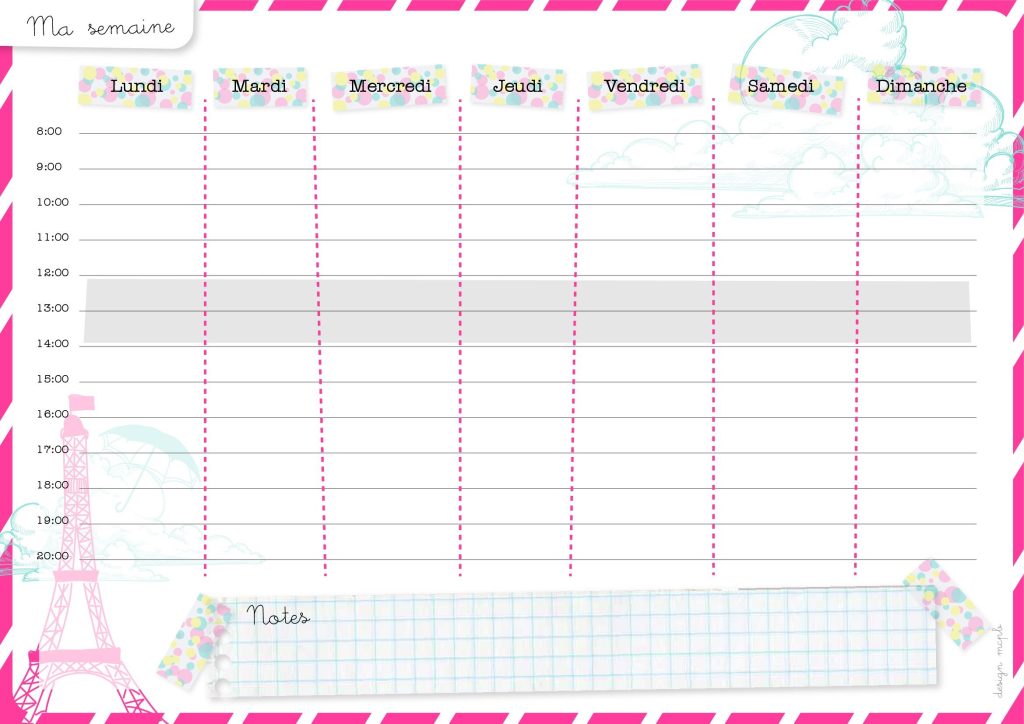
C. On papote
Comparez votre emploi du temps avec votre partenaire. Suivez le modèle.
|
Modèle : Le lundi, j’ai un cours de maths et ma / mon partenaire a un cours de maths aussi. J’ai un cours de russe et ma / mon partenaire a un cours de biologie. etc. |
Week 4 Day 1
🧭 Why Practice with Authentic Materials?
It’s important to gather basic information from authentic written and audio documents—like travel tickets, signs, or announcements—because it helps you build real-world language skills. Don’t panic if you don’t understand everything! Instead, focus on recognizing familiar patterns, keywords, and visual cues. Even if you’re not fluent yet, your brain can use what you already know from your own language to deduce meaning and make educated guesses. This strategy helps you navigate real-life situations with more confidence and less stress. Over time, you’ll feel more empowered to function successfully in French—even with limited vocabulary.
On analyse en contexte : les voyages
1. On voyage en train: Le TER
Voici des billet de train TER de la SNCF : Billets de train.pdf.
Répondez aux questions suivantes :
To hear a live SNCF announcement, visit: France: SNCF Jingle and station announcement at Lyon-Part-Dieu station
2. On voyage en train: Le TGV
Répondez aux questions suivantes :
To hear a live SNCF announcement, visit: Annonce TGV Lyria : Départ pour Genève
3. On voyage en avion
Répondez aux questions suivantes :
Social Media Frenches: les abréviations sur X
As in other languages, abbreviations are often in French when writing on social media (=les réseaux sociaux) and sending text messages (=des textos, des sms). This is because abbreviations are shorter than the whole word and take less space and time to write. Here is a list of some common abbreviations in French:
|
bjr = bonjour a+ = à plus bcp = beaucoup biz = bisous dsl = désolé(e) pkoi = pourquoi |
Optional Activities in your Carnet personnel✍️
Consultez French Texting – Les Textos Français pour une liste plus compréhensive.
Step 1. Select three abbreviations from the list linked above. You will then look for these forms on X to see how French speakers use them in their messaging.
Step 2. Go to Explore X. (NB: If you have a X account, it will ask you to sign in. If you do not, pair up with a classmate). In the “Search X” field at the top of the page, enter one of your three expressions as a hashtag and hit Enter, e.g., #bcp.
Step 3. Scroll through the list of tweets it produced and look for the expression you searched for within each message.
Answer the following questions:
-
-
- Are all the posts that contain your abbreviation/hashtag written in French?
- What languages do you see represented?
- What does your abbreviation mean in these other languages?
-
Step 4. Return to the search field at the top of the page where you entered your expression as a hashtag. To the right of the field, you should see three dots. Click on the dots and click “Advanced Search.” In the field labeled “Any of these words,” type the three expressions / words you selected from the list above (enter them as plain words this time and not hashtags) and hit Enter. (NB: If you have a Twitter account and are signed into Twitter, you may also be able to constrain the language of the tweets you are searching. Set this to “French” for a more focused search). Answer the following questions
-
-
- What languages do you see represented in the tweets that contain your abbreviations?
- Which of your abbreviations is the most common in the tweets written in French?
- Find 1-2 examples of each abbreviation and observe how tweeters use it in their tweets in French. Are they speaking formally / informally? Are emojis or gifs included? What topics are they discussing in these tweets?, etc.
-
On finit sur une bonne note !
You made it through chapter 1, now take a moment to assess your progress. Read each objective, try to perform the task and check it off mentally if you are able to do it:
After finishing CH 1, I can:
☐ Greet someone, ask how they are, and say goodbye
☐ Identify which greetings are most appropriate depending on the time of day
☐ Explain the cultural practice of la bise in Francophone countries
☐ Explain cultural similarities and differences in how people greet one another and negotiate personal space
☐ Introduce myself (or someone else)
☐ Explain what cultural stereotypes are and why it’s important to challenge and move beyond them
☐ Tell someone what I study (or what someone else studies)
☐ Use definite and indefinite articles in the context of this chapter
☐ Use use and conjugate the verb être (to be) in the present tense.
☐ Understand and apply gender and number markings for common French nouns
☐ Identify various professions and the gender associated with them
☐ Recognize and use numbers up to 69
☐ Describe a classroom and what is around me
☐ Tell someone the date and the date of my birthday
☐ Gather basic information from authentic written and audio documents
You can also complete this activity electronically and see how you do:
On level up !
In which areas of this chapter do you feel confident in your abilities? In which areas do you feel less confident in your abilities? Keep on practing and learning!
Media Attributions
- Ch01-Les-etudiants
- 92329-text-photography-yellow-brain-light-stock
- How-many-greeting-kisses-in-France-VOX
- Carnet-personnel
- Chiffres-nombres
- Planning-hebdomadaire-semainier-imprimer
















